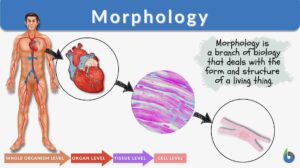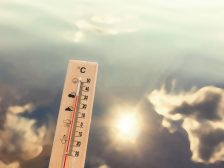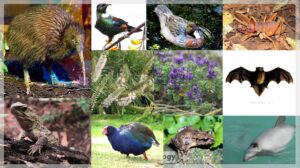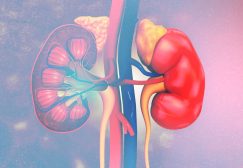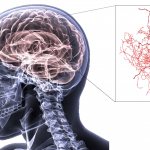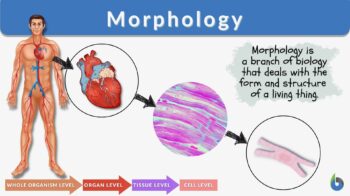
Morphology
n., plural: morphologies
[mɔɹˈfɑlədʒi]
Definition: study of the form and structure of living things
Table of Contents
Morphology Definition
Morphology means the study of the shape and structure of living things from a biological perspective. Morphology is a discipline of biology related to the study of the shape and structure of the organism and its unique structural characteristics.
What is Morphology? The term “morphology” came from the Ancient Greek “morph”, which means “shape,” and “lógos”, which means “study” or “investigation” In biology, we can define morphology as a subfield of biology that is concerned with the exterior and interior structures of organisms.
It studies the size, form, and shape of plants, animals, and microbes, as well as their parts’ interactions. In medicine, morphology is a discipline of life science concerned with the study of an organism or taxon’s general structure and its elements.
Morphology is the biological study of the form and structure of living things. It is the branch of biology that deals with both the external and internal structures of organisms. Thus, it may be divided into two distinct branches: anatomy and eidonomy. Etymology: Greek “morphé”, meaning “form” and “lógos”, meaning “study”. Compare: physiology. See also: cell morphology, carpology.
Historical Background
Paintings on cave walls in France, Spain show that ancient people valued animal shape and structure. (C. A. Villee, 2021). Aristotle was fascinated by biological shape and structure. He was especially interested in developmental morphology, studying the morphological characteristics of chicks, sharks, and bee breeding strategies. Galen dissects animals and documents internal anatomy. His depictions of the human morphology were based on dissections of monkeys and pigs instead of humans and thus have several inaccuracies.
Andreas Vesalius‘ 1543 article De humani corporis fabrica uncovered the flaws in Galen’s previous depictions of the human. The Father of microscopic anatomy, Marcello Malpighi, discovered capillaries in 1661. English physician William Harvey, proposed the presence of capillaries 30 years earlier. During 1668-1680, Dutch microscopist Antonie van Leeuwenhoek explains sperm cells, red blood cells, protozoa and bacteria. During the 19th century, various scientists documented the nucleus, nucleolus, chromosomes and also explained the complicated process of mitosis.
The famous work of a German botanist, Karl von Goebel, Organography der Pflanzen (1898–1901), remains a classic in the subject. It explains plant morphology. Early 19th-century pioneers in comparative morphology were British physician John Hunter and French biologist Georges Cuvier. They study similar animal structures. Sir Richard Owen, a British scientist, established two fundamental concepts in comparative morphology: homology (inner structural resemblance) and analogy (superficial or outward appearance). The molecular foundation of cellular structure has been a key emphasis in modern morphology. Techniques like electron microscopy have uncovered intricate features of cell structure, linked structural details to specific cell activities, and helped a lot in the study of living things.
Fundamental Concepts
- Homology and analogy
- Body plan and symmetry
- Morphological basis of classification
Homology and analogy
Homologous structures arise from identical embryonic components and exhibit similar structure and developmental patterns. Human arms, bird wings, and whale pectoral fins are all homologous structures with similar bone, muscle, nerve, and blood vessel patterns, but distinct functions. By contrast, analogous structures are the same superficially and perform similar tasks yet have very distinct structural and developmental patterns. Bird and butterfly wings are analogous structures that enable flight but share no common developmental mechanisms. (Claude A. Villee, 2021)
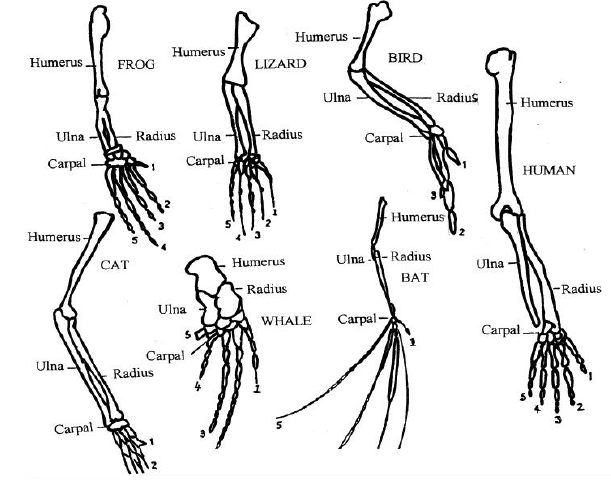
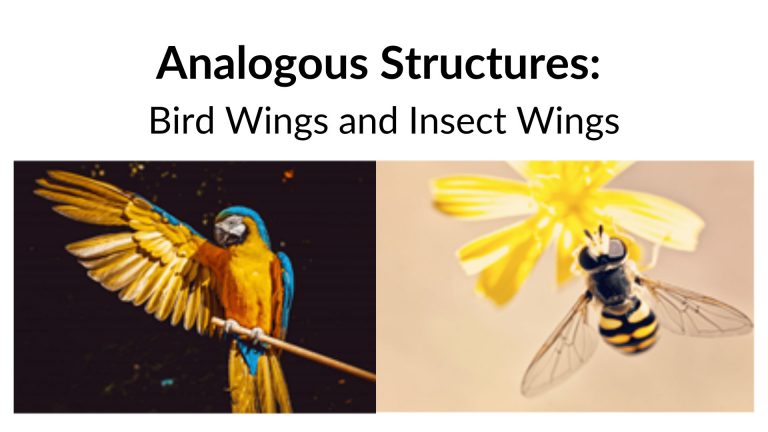
Body plan and symmetry
Most animals and plants have spherical, radial, or bilateral symmetry. A spherically symmetrical body has the same shape throughout and may be sliced in half in any plane, for example, the body of a protozoan (e.g. Heliozoa). Starfish and mushrooms have radially symmetrical bodies with distinct top and bottom and body sections radiating from a central axis. Any plane with an axis passing through the core of the starfish may divide it in half. The anterior end has a mouth and the posterior end has an anus. Some species, including amoebas, slime molds, and some sponges, have no plane of symmetry. (Claude A. Villee, 2021)
In higher animals like humans, only a cut from head to foot in the middle separates the body into equal halves. Anterior and posterior ends may be differentiated, as dorsal and ventral sides. Certain human internal organs (such as the heart) are not symmetrical, even the right and left sides of the body are not perfectly equal.
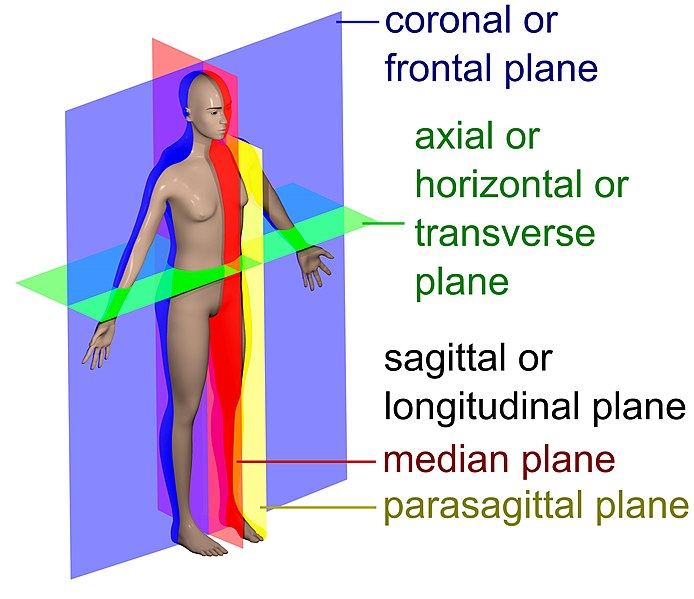
Morphological basis of classification
Color, size, and proportion are used to distinguish closely related plant and animal species. The presence or absence of cellular differentiation is one morphological feature used in classifying animals and identifying their evolutionary relationships. Some multicellular animals have embryonic (germ) layers, ectoderm, mesoderm, and endoderm. Some animals may have a single or some have a double body cavity.
Plants, like animals, can be single-celled or have many different cell types. Most lower plants, including algae and fungus, have parenchyma cells, which are the least differentiated and specialized plant cells. Unlike animal embryonic tissues, higher plant embryonic tissues are active throughout plant life. The sexual phase and the sporophyte phase in plants are important in identifying plant families. (Claude A. Villee, 2021)
Divisions of Morphology
There are different types of morphology:
- Cellular Morphology
- Tissue Morphology
- Organ Morphology
- The Whole Organism
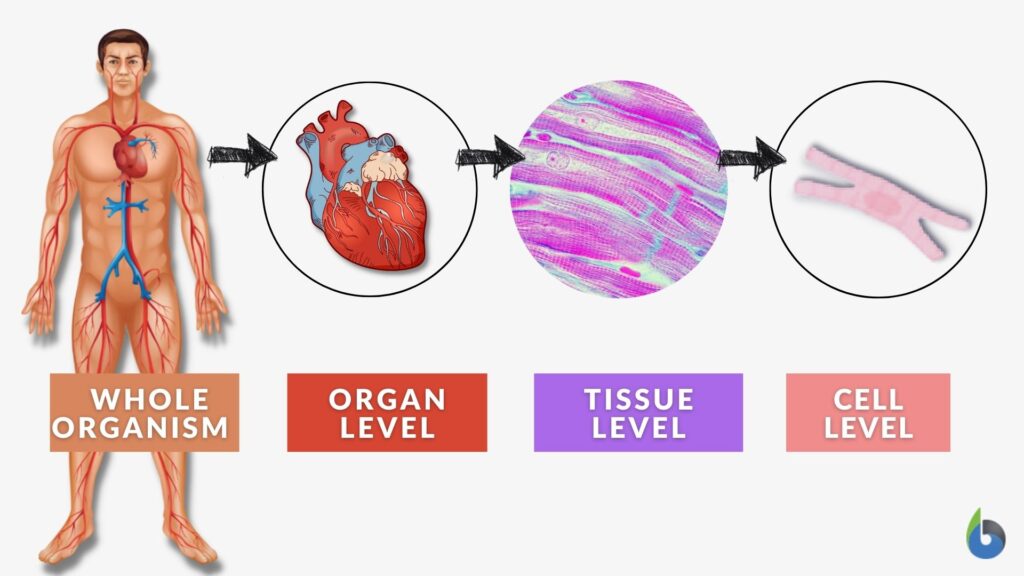
Cellular Morphology
Cells vary in size and form. Epithelial cells are cells that create walls, preventing the free flow of objects from one side to the other. Squamous means broad, cuboidal means cubed, and columnar means rectangular. Nerve cells are long and thin, whereas fat storage cells are broad and spherical.
Tissue Morphology
Tissues may also have different functional morphologies. Skeletal muscle cells create lengthy twisted bundles. Epithelial tissue of lungs includes grape-like sacs of cells that efficiently exchange carbon dioxide and oxygen. Cartilage absorbs trauma from walking and running.
Organ Morphology
Organ morphology follows a similar pattern of function and shape. The heart contains four chambers. The ventricles have thicker muscular walls than the atria. The ventricle walls are thick to pump blood to other parts of the body.
The Whole Organism
The organism’s morphology is at the highest level. There are different examples of morphology in biology. In animals, radial symmetry (like a starfish) and bilateral symmetry (like a lobster) are the two basic anatomical planes. Fin structure for swimming differs from the limb structure for running. Dolphins have five fins to balance and control body temperature. Cheetahs have light, aerodynamic bodies for quick chases.
Try to answer the quiz below to check what you have learned so far about morphology.
References
- H., D. (2021). Types of Morphology. Retrieved 06 Dec, 2021, from https://sciencing.com/types-morphology-17126.html
- Villee, C. A. (2021). Fundamental concepts of Homology and analogy. Retrieved 06 Dec, 2021, from https://www.britannica.com/science/morphology-biology/Fundamental-concepts
- Villee, C. A. (2021). morphology. Retrieved 06 Dec, 2021, from https://www.britannica.com/science/morphology-biology
- Villee, C. A. (2021). morphology. Retrieved 06 Dec, 2021, from https://www.britannica.com/science/morphology-biology#ref48669
©BiologyOnline.com. Content provided and moderated by Biology Online Editors.

